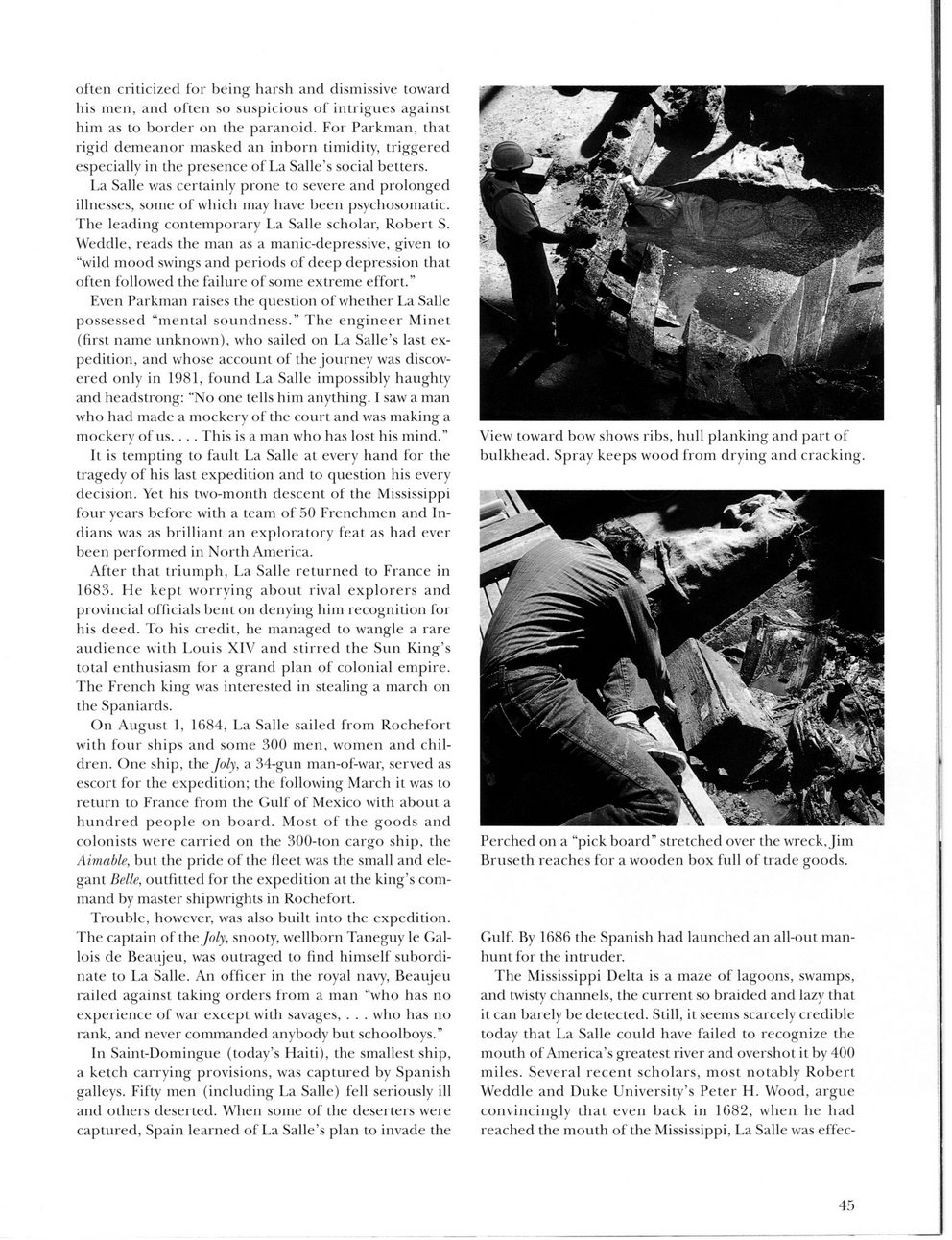This text was obtained via automated optical character recognition.
It has not been edited and may therefore contain several errors.
often criticized for being harsh and dismissive toward his men, and often so suspicious of intrigues against him as to border on the paranoid. For Parkman, that rigid demeanor masked an inborn timidity, triggered especially in the presence of La Salle?s social betters. La Salle was certainly prone to severe and prolonged illnesses, some of which may have been psychosomatic. The leading contemporary La Salle scholar, Robert S. Weddle, reads the man as a manic-depressive, given to ?wild mood swings and periods of deep depression that often followed the failure of some extreme effort.? Even Parkman raises the question of whether La Salle possessed ?mental soundness.? The engineer Minet (first name unknown), who sailed on La Salle?s last expedition, and whose account of the journey was discovered only in 1981, found La Salle impossibly haughty and headstrong: ?No one tells him anything. I saw a man who had made a mockery of the court and was making a mockery of us. . . . This is a man who has lost his mind.? It is tempting to fault La Salle at every hand for the tragedy of his last expedition and to question his every decision. Yet his two-month descent of the Mississippi four years before with a team of 50 Frenchmen and Indians was as brilliant an exploratory feat as had ever been performed in North America. After that triumph, La Salle returned to France in 1683. He kept worrying about rival explorers and provincial officials bent on denying him recognition for his deed. To his credit, he managed to wangle a rare audience with Louis XIV and stirred the Sun King?s total enthusiasm for a grand plan of colonial empire. The French king was interested in stealing a march on the Spaniards. On August 1, 1684, La Salle sailed from Rochefort with four ships and some 300 men, women and children. One ship, the Joly, a 34-gun man-of-war, served as escort for the expedition; the following March it was to return to France from the Gulf of Mexico with about a hundred people on board. Most of the goods and colonists were carried on the 300-ton cargo ship, the Aimable, but the pride of the fleet was the small and elegant Belle, outfitted for the expedition at the king?s command by master shipwrights in Rochefort. Trouble, however, was also built into the expedition. The captain of the Joly, snooty, wellborn Taneguy le Gal-lois de Beaujeu, was outraged to find himself subordinate to La Salle. An officer in the royal navy, Beaujeu railed against taking orders from a man ?who has no experience of war except with savages, . . . who has no rank, and never commanded anybody but schoolboys.? In Saint-Domingue (today?s Haiti), the smallest ship, a ketch carrying provisions, was captured by Spanish galleys. Fifty men (including La Salle) fell seriously ill and others deserted. W7hen some of the deserters were captured, Spain learned of La Salle?s plan to invade the View toward bow shows ribs, hull planking and part of bulkhead. Spray keeps wood from drying and cracking. Perched on a ?pick board? stretched over the wreck, Jim Bruseth reaches for a wooden box full of trade goods. Gulf. By 1686 the Spanish had launched an all-out manhunt for the intruder. The Mississippi Delta is a maze of lagoons, swamps, and twisty channels, the current so braided and lazy that it can barely be detected. Still, it seems scarcely credible today that La Salle could have failed to recognize the mouth of America?s greatest river and overshot it by 400 miles. Several recent scholars, most notably Robert W'eddle and Duke University?s Peter H. W?ood, argue convincingly that even back in 1682, when he had reached the mouth of the Mississippi, La Salle was effec- 45

LaSalle 005